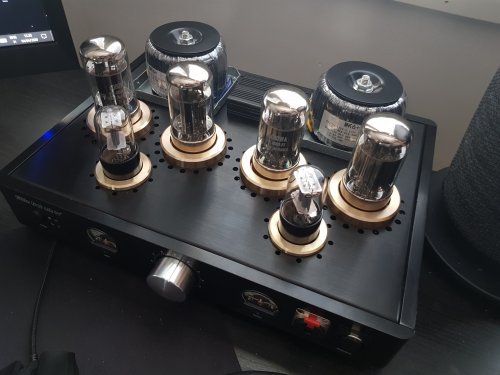baronbeehive
Headphoneus Supremus
Quote:
I just checked again with LD and David said the power tubes should be matched but "not too picky" to quote him, sorry I can't be more precise.
I believe due to the balanced topology it is actually primordial that each pair are closely matched as they amplify the opposite legs of the same signals. I know the driver tubes don't need to be matched but the power tubes have to matched for best performance (that's in the manual)
I just checked again with LD and David said the power tubes should be matched but "not too picky" to quote him, sorry I can't be more precise.

























